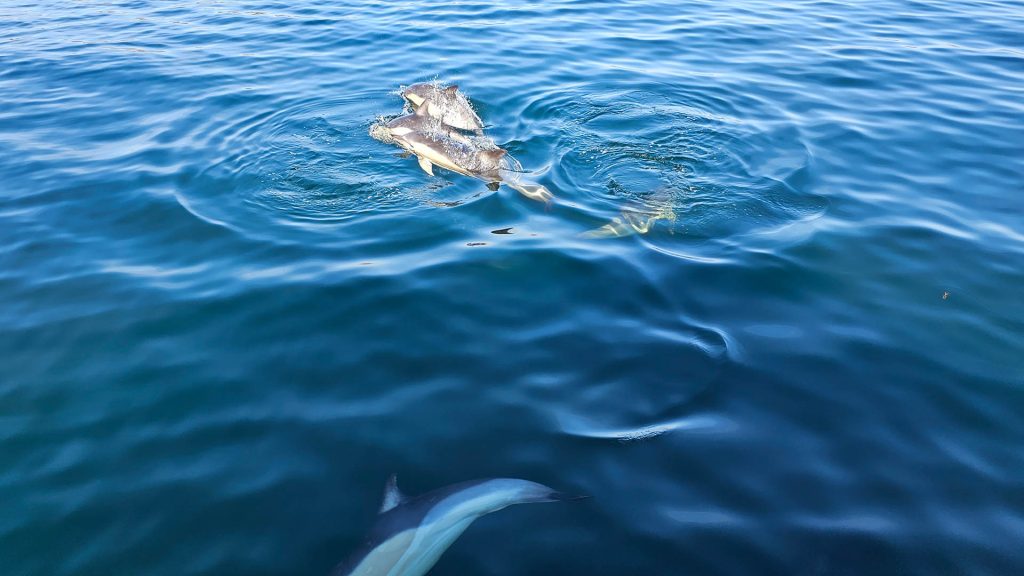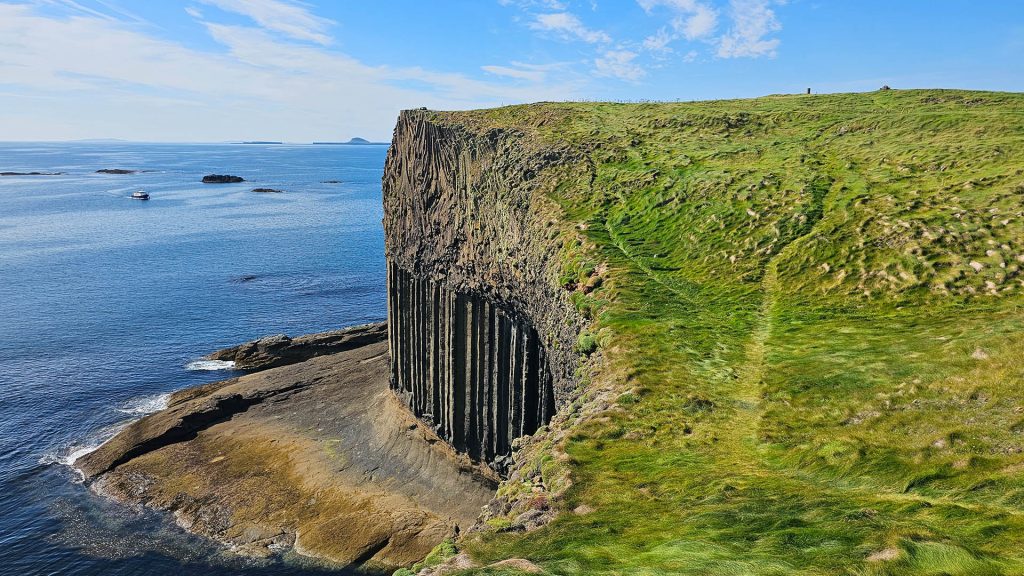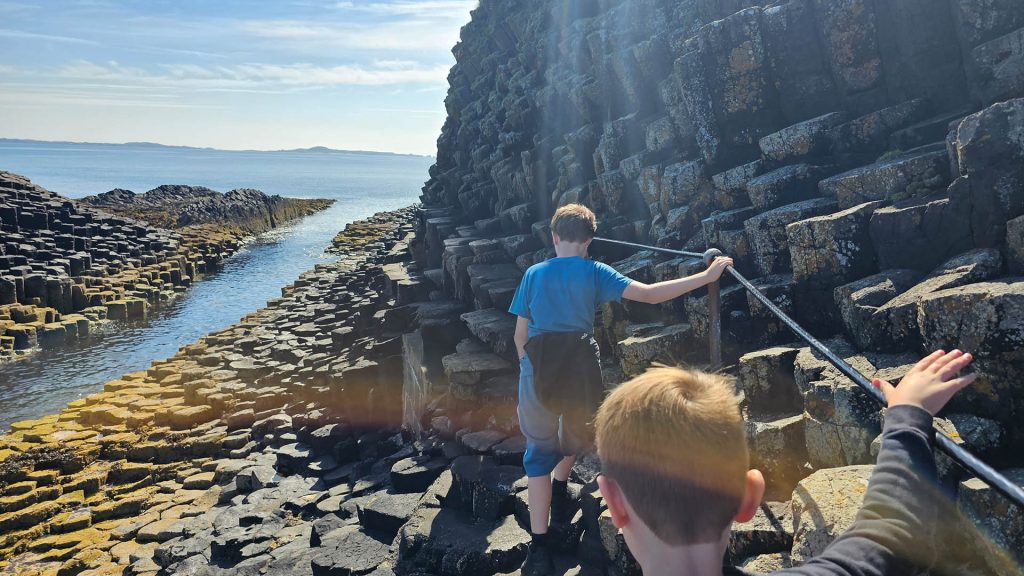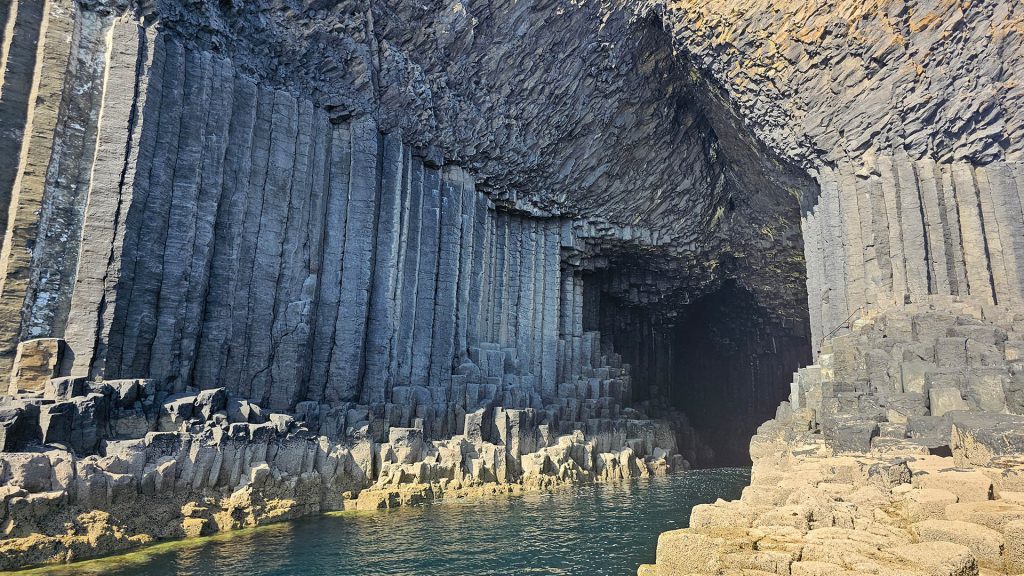There are few places in the world that inspire awe quite like the Isle of Staffa, and a boat trip with Turus Mara is the perfect way to experience its unique magic. With daily sailings from Ulva Ferry at both 10 am and 2 pm, this approximately three and a half-hour excursion promises a truly memorable journey through some of Scotland’s most stunning coastal and geological landscapes. This isn’t just a boat ride; it’s a portal to a place where myth and geology collide, offering a sensory feast for every adventurer.
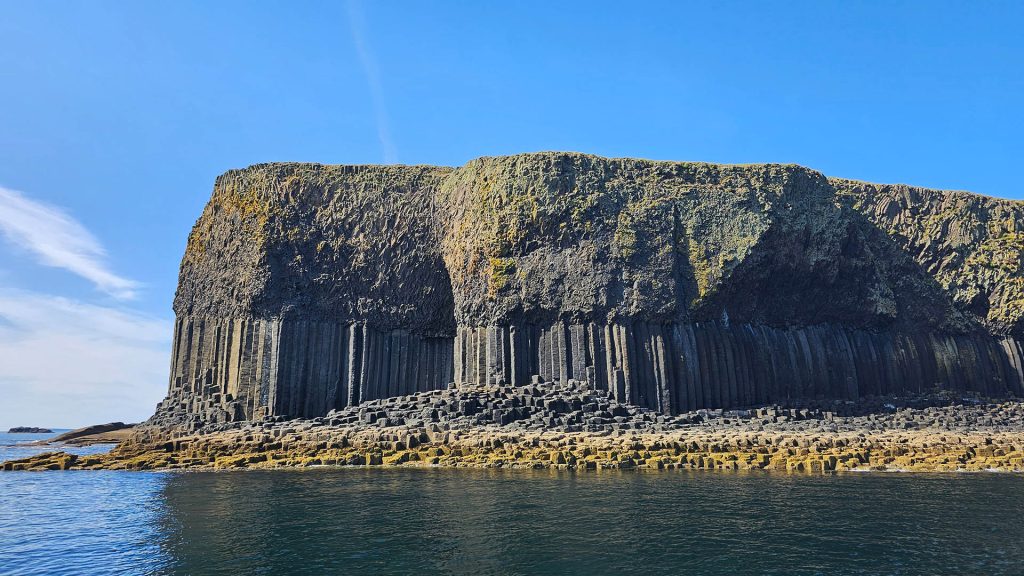
The Journey to Staffa
Your adventure begins on the peaceful Isle of Mull, where you’ll board a Turus Mara vessel at the Ulva Ferry slipway. As the boat pulls away from the shore, the air fills with the salty spray of the Atlantic. The knowledgeable crew often points out hidden coves and dramatic rock formations along the way. You’ll be treated to a scenic tour of the rugged coastline, with potential sightings of common seals basking on the rocks, and a great variety of seabirds. Keep a keen eye on the water, as dolphins and even minke whales are frequent visitors to these rich feeding grounds. The journey from Ulva to Staffa is a highlight in itself, offering breathtaking views of the Treshnish Isles as they rise from the sea and the vast, open ocean.
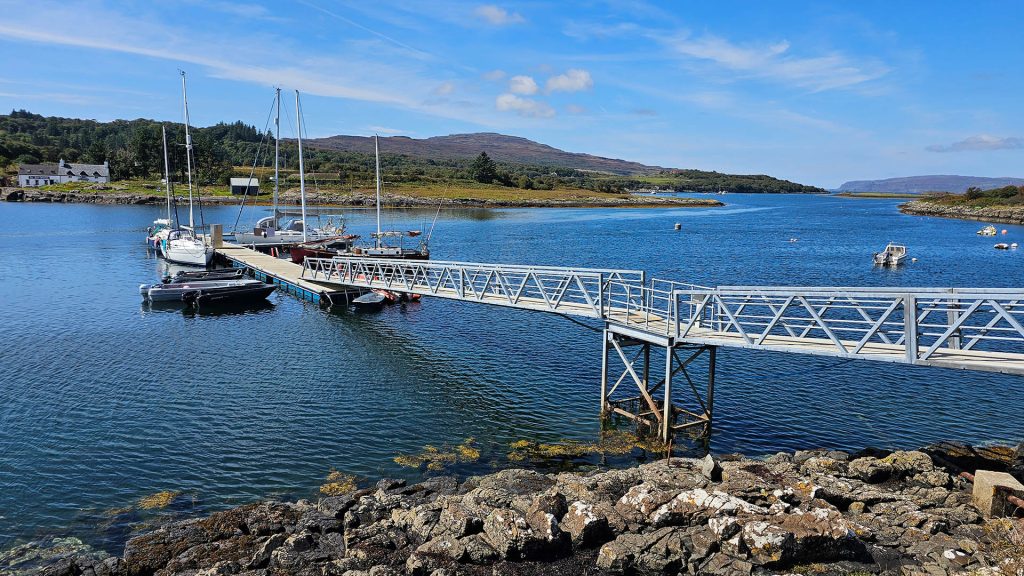
Exploring Fingal’s Cave and Staffa
Upon arrival at Staffa, you’ll feel an immediate sense of wonder. The island is essentially a colossal rock sculpted by nature, and its most famous attraction, Fingal’s Cave, is a masterpiece of geological design. The name comes from an 18th-century poem by James Macpherson, but the cave’s true celebrity came from its incredible basalt columns. These perfectly hexagonal pillars were formed by volcanic eruptions millions of years ago and are part of the same ancient lava flow that created Northern Ireland’s famous Giant’s Causeway. As you walk along the natural causeway and venture into the cave, the rhythmic crash of the waves against the pillars creates a mesmerizing, otherworldly acoustic experience that famously inspired composer Felix Mendelssohn to write his Hebrides Overture. The sound is so unique it’s like the cave itself is breathing.
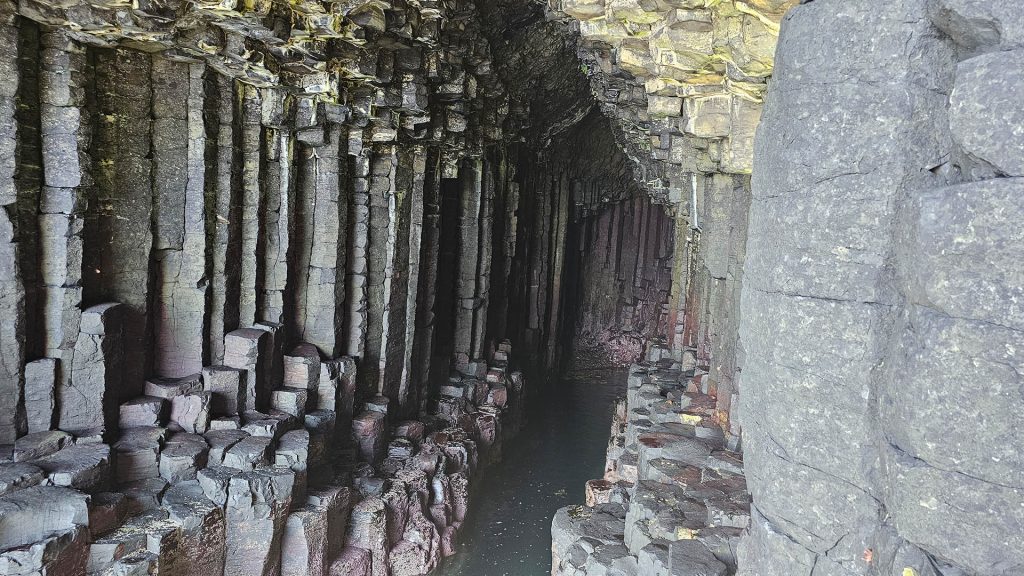
The Puffin Colony and Other Wildlife
Beyond the cave, Staffa is a designated National Nature Reserve and a haven for wildlife. For many visitors, the highlight is a chance to see the island’s charming puffin colony. These comical “sea parrots” return to their burrows on Staffa each year for the breeding season, which runs from late April to early August. The best time to see them on land, waddling to and from their burrows and carrying beaks full of fish, is during the peak months of May, June, and July. While it is possible to see them in the first days of August, it is important to know that the puffins have already begun their return to the sea, and sightings cannot be guaranteed. It is highly unlikely you will see them on the island by late August.
The island is also a sanctuary for other seabirds like black guillemots and fulmars. For those who want to see more, a short but steep path leads to the top of the island, rewarding you with panoramic views of the Small Isles and the full majesty of the Hebridean coastline.
Pricing & Booking
The Turus Mara trip offers excellent value for such a unique and iconic Scottish experience. The current cost is £40 per adult and £20 per child.
For those who are lucky enough to call this area home, there is a very significant benefit: a 50% local discount. Be sure to mention this when booking, as it can offer a substantial saving on your trip and is a great way to support local residents.
Practical Tips for your Trip
- The total trip duration is approximately 3.5 hours, which includes about one hour on the island for exploration. This is the perfect amount of time to walk to Fingal’s Cave and take in the incredible geology. If you wish to see the puffins (in season) and explore more of the island, you’ll want to plan your time carefully.
- Booking is essential: As a popular destination, it’s highly recommended that you book your Turus Mara trip well in advance to secure your spot.
- Dress for the weather: The Hebridean weather is notoriously unpredictable. Dress in warm, waterproof layers, as it can be colder on the water than on land. Sturdy, non-slip footwear is also a must for navigating the rocky terrain of Staffa.
- Bring your gear: Don’t forget a camera to capture the stunning landscapes and wildlife. Binoculars will also greatly enhance your bird and marine life spotting experience.
- No facilities: Staffa is an uninhabited island with no facilities, including toilets. Be sure to use the facilities on the boat before disembarking and bring any snacks or water you might need.
- Listen to the crew: The boat crew are experts on the local area and the conditions. Always listen to their instructions for your safety and to get the most out of your trip.
